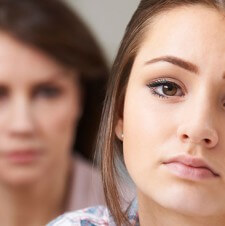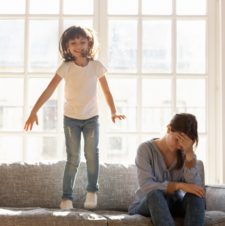How Safe is Your Sunscreen?
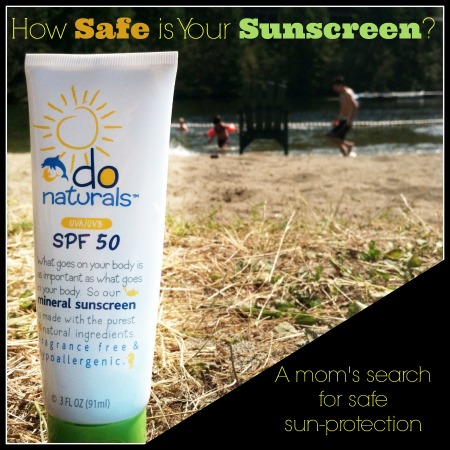
![]()
A while back when I really started paying attention to things (yes, this coincided with the birth of my first child) I started researching and writing about food safety. A few years later, a friend introduced me to The Dirty Dozen.
It is a list, issued by the Environmental Working Group, which names the twelve foods to buy only in the organic section. These are the foods that are plagued with pesticides.
I printed out the list and stuck it to my fridge. The twelve were memorized.
Later as I was combing their site, I stopped at their cosmetics database. In the US, cosmetics are not regulated. This means companies can put anything they want into cosmetics and the U.S. government does not review a product’s safety before it hits the shelves, your shopping cart or, most importantly, your body. For that matter, no one did, until EWG took on the task.
The EWG has been working on their database since 2004 to investigate the ingredients of all cosmetics and they have created a safety-rating guide where you can enter the name of a product and see how it ranks. Shampoos, soaps, and lotions are just some of the items.
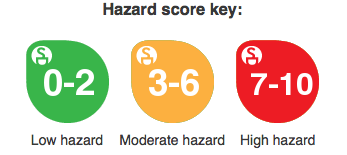
How does this translate to my bath and body products?

(Disclosure and fine print: so that we are all on the same page)
 Last year, I was introduced to the Dolphin Organics line. As someone, who is watchful of the products we use in our home and on our babes’ bodies, I was completely taken with Dolphin Organic’s and DO Naturals’s commitment to provide safe alternatives. After having several conversations with the company’s owner, I couldn’t think of a better selection of products to use for my family.
Last year, I was introduced to the Dolphin Organics line. As someone, who is watchful of the products we use in our home and on our babes’ bodies, I was completely taken with Dolphin Organic’s and DO Naturals’s commitment to provide safe alternatives. After having several conversations with the company’s owner, I couldn’t think of a better selection of products to use for my family.
Truth in labeling, high standards in quality raw materials and good performance.
As summer approached this year, I did my usual search on the EWG database for “kids sunscreen” and 69 products came up on the list. It was ALARMING that 35 of the products came up as a 7 (high hazard) and 20 came up with a moderate hazard rating.
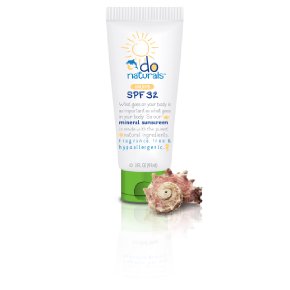
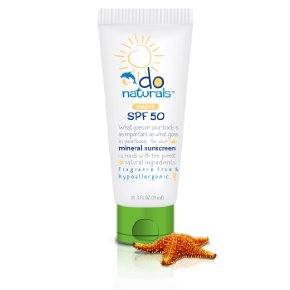 A search for DO Naturals popped up their SPF 50 with a score of 1 and their SPF 32 with a score of 2. Both were in the low hazard range. This wasn’t surprising. It is what I have come to expect from DO Naturals. What WAS a surprise was the news that they added sunscreen to their line. I had to get some!
A search for DO Naturals popped up their SPF 50 with a score of 1 and their SPF 32 with a score of 2. Both were in the low hazard range. This wasn’t surprising. It is what I have come to expect from DO Naturals. What WAS a surprise was the news that they added sunscreen to their line. I had to get some!
We received one of the SPF 32 and SPF 50 3 oz. tubes from DO Naturals.
We are an SPF 30ish family and we really love their SPF 32. It rubs on easily, the smell is pleasant and most importantly, IT WORKS. We used it for our first sun exposure of the summer on a trip to a local lake and there were no sunburns. We reapplied once during our 4 hour stay and our kids were in the water most of the time. The tubes were handed around to all of our friends and each on had the same response. This is really nice.
Another friend had complained that her son was continuously having reactions to his sunscreen. I gave her a tube of the SPF 32 that I had purchased and he finally found a sunscreen that didn’t give him a bad reaction. Winner!
I tried the SPF 50 on my face and it takes some rubbing in, but I expect that with any lotion with an SPF of 50+ …and again, IT WORKS. After a day in the water and playing with my kids, no sunburn.
In addition, both sunscreens are based in certified organic aloe, not water, so a little goes a LONG way!
And here is the 411 on why it works: Their mineral sunscreens offers broad spectrum (UVA/UVB) protection without harsh chemicals or nano particles. The active ingredients Titanium Dioxide and Zinc Oxide. It’s where you go when you want effective sunblocking ingredients.
PROS:
no scent
safe
excellent, long lasting protection
offers broad spectrum protection (UVA/UVB)
family-friendly – one size fits all (everyone used it!)
CONS:
the SPF 50 needs to be rubbed in a bit
DO Naturals is my family’s (and now some of my friends’) sunscreen of choice. No more breakouts from icky chemicals and protection from skin cancer.
Now a little something for YOU!
Last updated by Val Curtis on July 21, 2013


